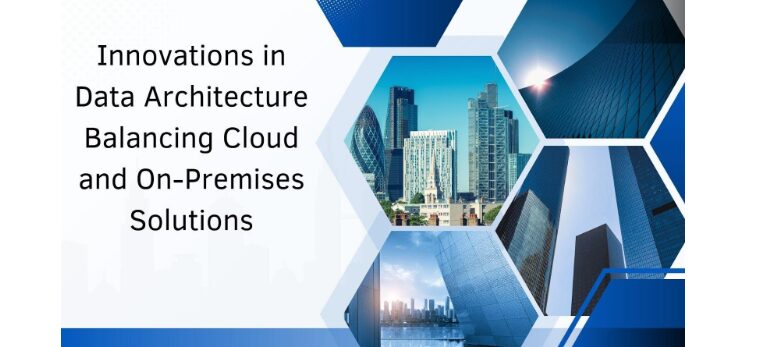Innovations in Data Architecture: Balancing Cloud and On-Premises Solutions

In this digital world, Saurabh Kumar explores the intricate dynamics of cloud-based and on-premises architectures, providing insights into how organizations can effectively navigate the evolving landscape of data infrastructure. His analysis emphasizes achieving scalability, security, and strategic balance to optimize operational efficiency and meet compliance demands.
The Shift Towards Cloud Scalability
Cloud computing has transformed enterprise IT by offering unparalleled scalability and flexibility. The advent of elastic computing capabilities enables organizations to adapt to fluctuating workloads seamlessly. For instance, serverless computing and dynamic scaling empower businesses to expand resources within seconds. This agility has been critical for industries with unpredictable demand surges, such as e-commerce, where transaction volumes can spike by 300% to 400% during peak seasons.
Recent advancements in cloud infrastructure highlight innovations in storage durability and global content delivery. Cloud platforms now guarantee over 99.999999999% (11 nines) data durability and deliver content with minimal latency through globally distributed networks. These capabilities and consumption-based pricing models make cloud solutions attractive for businesses aiming to optimize operational efficiency and cost management.
The Resilience of On-Premises Infrastructure
Despite the allure of cloud computing, on-premises infrastructure remains a vital component of modern IT strategies. On-premises solutions offer distinct advantages in latency-sensitive applications and regulatory compliance. Organizations adopting advanced software-defined infrastructure (SDI) report improved resource utilization by 45% and reduced operational costs by 38% compared to traditional setups.
Technological advancements in on-premises environments include automation and artificial intelligence integration, significantly enhancing efficiency and security. Automated infrastructure management systems reduce manual intervention by 67%, while AI-driven monitoring processes over 10,000 security events per second, addressing 89% of incidents without human input. These innovations have solidified on-premises architecture as a reliable choice for sectors prioritizing data sovereignty and control.
Bridging the Divide: The Hybrid Approach
The hybrid model combines cloud scalability with on-premises control, offering up to 40% cost efficiency through strategic resource allocation. It enhances resilience with redundancy and failover capabilities, ensuring consistent performance for critical applications. Businesses achieve operational efficiency by integrating dedicated networks with cloud resources while addressing compliance needs. This dual approach empowers organizations to optimize performance, enhance reliability, and maintain a competitive edge in an evolving technological landscape.
Security and Compliance Innovations
Security remains a cornerstone of architectural decisions. Cloud providers continue to invest in robust security frameworks, maintaining certifications like SOC 2 and ISO 27001. Shared responsibility models have proven effective, reducing security incidents by 45% with proper cloud security controls.
Conversely, on-premises environments enable complete control over security protocols. Organizations implementing zero-trust architectures in these setups have achieved a 73% reduction in breaches. Automated security scanning and real-time compliance monitoring further enhance the ability to meet stringent regulatory standards, making on-premises solutions indispensable for industries with high compliance demands.
Economic Considerations and Cost Optimization
The economic landscape of data architecture is evolving, with organizations carefully balancing capital and operational expenditures. Cloud solutions operate on a pay-as-you-go model, providing predictable costs aligned with resource usage. However, businesses must account for hidden costs, such as data egress fees and long-term storage expenses.
On-premises infrastructure involves significant upfront investments but offers long-term cost predictability. Organizations adopting modern infrastructure automation have reported reductions in deployment times by 84% and configuration errors by 78%. These efficiencies underscore the economic viability of on-premises systems when coupled with advanced automation.
Decision Frameworks for Strategic Alignment
The success of infrastructure decisions hinges on a structured approach that aligns with organizational objectives. Comprehensive frameworks emphasizing scenario analysis and stakeholder engagement have proven effective, improving long-term outcomes by 45%. Implementing automated infrastructure solutions has further streamlined operations, reducing human errors and enhancing resource allocation by 41%.
Organizations adopting phased implementation methodologies achieve faster time-to-value while maintaining budget adherence. Regular infrastructure reviews and optimization strategies contribute to sustained performance improvements, with annual cost savings averaging 23%.
In conclusion, Saurabh Kumar emphasizes that the future of data architecture rests in the strategic integration of cloud and on-premises solutions. Embracing hybrid models enables organizations to leverage the strengths of both approaches, address their limitations, and achieve operational efficiency, cost optimization, and regulatory compliance. This balanced strategy serves as a cornerstone for sustainable digital transformation.





